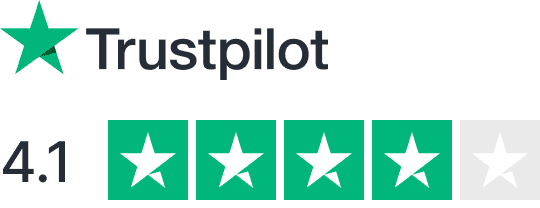Looking to scale your team quickly with skilled developers? Hiring from Latin America (LATAM) offers a fast, cost-effective solution. LATAM professionals work in U.S.-aligned time zones, and hiring through providers like CareMinds can cut hiring time from months to just 2 weeks. Rates start at $31/hour, and rigorous vetting ensures top-tier talent.
Key takeaways:
- Faster Hiring: Onboard in 2 weeks vs. traditional 8 weeks.
- High Quality: Only 1% of candidates are selected.
- Smooth Integration: Structured onboarding and communication practices ensure success.
Whether you’re a startup or a large company, integrating LATAM talent is about clear communication, performance tracking, and aligning team goals. This approach has helped companies like TechFlow and DataSphere speed up projects and reduce costs.
Ready to build efficient global teams? Here’s how to make it work.
Case Study 1: Startup Growth with LATAM Teams
Initial Problems
TechFlow, a startup in San Francisco specializing in cloud management platforms, faced a major hurdle in early 2024. Their development team was understaffed, and tight deadlines made the situation worse. Hiring was a slow grind – reviewing hundreds of resumes just for one role, with their usual process dragging on for 8 weeks per position. They needed a faster, more efficient hiring approach.
Implementation Steps
To tackle these issues, TechFlow partnered with CareMinds and rolled out a three-phase plan:
- Talent Matching
TechFlow outlined their technical needs in detail. Within just 3 days, they were matched with pre-screened candidates from the top 1% of over 1,000 applicants. - Onboarding Process
A structured onboarding plan was implemented. This included setting up technical tools, reviewing documentation, daily standups, and paired programming sessions. - Integration Framework
They established clear communication guidelines and adopted collaboration tools. CareMinds also provided HR and admin support, ensuring the process went smoothly.
Measured Results
The new approach delivered clear improvements. Hiring time dropped from 8 weeks to just 2. A 2-week trial period helped confirm team fit before making long-term commitments, which sped up product development significantly.
Case Study 2: Large Company Remote Integration
Company Objectives
DataSphere, a global software company based in Boston, wanted to expand its engineering team while maintaining high-quality work and smooth teamwork. Their goals? Speed up hiring and effectively integrate remote developers with their in-office teams.
To tackle this, DataSphere developed a focused plan to overcome the challenges of remote integration.
Problem Solutions
DataSphere’s integration strategy revolved around three main areas:
- Talent Acquisition and Vetting
They teamed up with CareMinds to source pre-vetted LATAM developers. This process included rigorous technical tests, cultural fit evaluations, and a two-week trial period to ensure compatibility. - Integration Framework
A structured onboarding program was created. It started with setting up technical tools and codebase familiarization, moved into aligning developers with projects and teams, and ended with empowering them to work independently while receiving ongoing mentorship. - Communication Protocol
They introduced dedicated communication channels and scheduled bi-weekly cross-team meetings to keep remote and on-site staff aligned.
These steps created a strong foundation for success.
Performance Impact
By working with CareMinds, DataSphere saw measurable results:
- Faster hiring: Time-to-hire dropped from 60 days to just 14 days, thanks in part to the two-week trial period.
- High success rate: They achieved a 96% placement success rate.
- Cost-effective rates: Remote developer rates began at $31 per hour, maintaining top-notch quality.
What Works: LATAM Team Integration
Communication Methods
Clear communication is the backbone of integrating LATAM talent into your team. Here’s how successful teams manage it:
Synchronous Communication
- Hold daily standups during overlapping work hours.
- Schedule bi-weekly video calls for cross-team updates.
- Conduct one-on-one check-ins between team leads and developers.
Asynchronous Tools
- Use project management platforms to track progress.
- Maintain well-organized documentation repositories.
- Keep team chat active for ongoing updates and quick clarifications.
Cross-Team Understanding
Building strong cross-team relationships takes deliberate effort. Companies that succeed in this area prioritize structured knowledge-sharing practices:
Documentation Practices: Teams create and maintain detailed documentation for:
- Technical specs
- Workflow processes
- Team procedures
- Cultural norms and expectations
Mentorship Programs: Pair LATAM developers with on-site team members to ease both technical and cultural transitions. This helps ensure everyone is on the same page with tools, workflows, and expectations.
Tools and Guidelines
To complement effective communication and cross-team understanding, the right tools and clear guidelines are essential for smooth collaboration.
| Tool Category | Purpose | Guidelines |
|---|---|---|
| Project Management | Track tasks and manage timelines | Assign clear ownership and provide regular updates |
| Communication | Facilitate chats and video calls | Set schedules for check-ins and response times |
| Documentation | Share knowledge and processes | Keep documentation updated and accessible |
| Code Collaboration | Version control and code reviews | Follow standardized review processes |
Key Guidelines
- Define expected response times for communication channels.
- Standardize documentation formats and updates.
- Create feedback loops to maintain performance standards.
CareMinds exemplifies the payoff of these strategies. Their rigorous vetting process allows only 1% of over 1,000 developers to join their team, ensuring top-tier talent integration.
sbb-itb-a3fbb4e
Unlocking Growth: How North American Agencies Thrive with Latin American Tech Talent
Solving Common Problems
Tackling common challenges helps improve team collaboration and ensures smoother integration processes.
Time Zone Management
Managing time zones effectively requires clear guidelines. Aim for a 4-hour core overlap (using the typical 1–3 hour difference with U.S. Eastern Time) to keep everyone connected. Use asynchronous tools like shared workspaces, recorded meetings, and reserve live calls only for high-priority discussions. These practices help LATAM teams stay aligned with in-house operations without unnecessary disruptions.
Building Trust with Remote Teams
Trust in remote teams is built through clear onboarding processes and transparent accountability. Here’s how to make it work:
- Structured Onboarding: Verify technical skills, set team integration steps, define performance metrics, and provide regular feedback to establish a solid working relationship.
- Performance Tracking: Use systems that focus on deliverables to ensure transparency and build confidence between remote and in-house teams.
For instance, a 2-week trial period – like the one offered by CareMinds – can help evaluate team fit and build initial trust. These steps ensure LATAM team members are seamlessly integrated with clear expectations and proven performance.
Aligning Team Culture
To successfully integrate LATAM teams, it’s crucial to align their culture with that of your on-site teams. Here are some effective strategies:
- Cultural Integration Programs: Host bi-weekly cross-cultural workshops, organize virtual team-building activities, and create clear communication and feedback channels.
- Shared Success Metrics: Set common goals and KPIs for both remote and local teams to eliminate the risk of an "us vs. them" mentality.
- Regular Culture Check-ins: Schedule monthly meetings to address communication gaps, improve workflows, and strengthen team dynamics.
These efforts help create a unified work environment where LATAM and local teams collaborate effectively, leveraging the strengths of global talent.
Conclusion
Main Points
Integrating LATAM talent successfully comes down to three main factors: structured communication, performance evaluations, and cultural alignment. Teams that excel in these areas often see better results and higher satisfaction. As companies increasingly turn to global talent pools, focusing on skills and proven capabilities – rather than outdated hiring metrics – has shown to be especially effective.
What’s Next in Global Teams
The way companies integrate global talent is changing fast, with LATAM emerging as a key region. The ability to shorten hiring timelines from months to just days highlights the growing demand for quick team scaling and specialized skills.
Here are some trends shaping the future of global teams:
- Skill-Based Hiring: Shifting from resumes to performance-focused evaluations.
- Flexible Onboarding: Using trial periods and phased integration to ensure a smooth fit.
- Tech-Driven Collaboration: Leveraging advanced tools for remote team management and communication.
These shifts are paving the way for practical, effective solutions – something CareMinds specializes in.
How CareMinds Can Help

CareMinds provides a streamlined solution for companies aiming to overcome common integration challenges. By rigorously selecting only the top 1% of over 1,000 developers, they ensure access to highly skilled LATAM professionals. Their efficient process cuts hiring times to just 3 days.
Here’s what their service includes:
- Affordable Rates: Talent matching starts at $31/hour.
- Risk-Free Trial: A 2-week trial period to assess team compatibility.
- Long-Term Options: Buyout opportunities after one year of engagement.
CareMinds’ approach ensures teams are built quickly, perform well, and integrate smoothly, all while reducing potential risks.
















